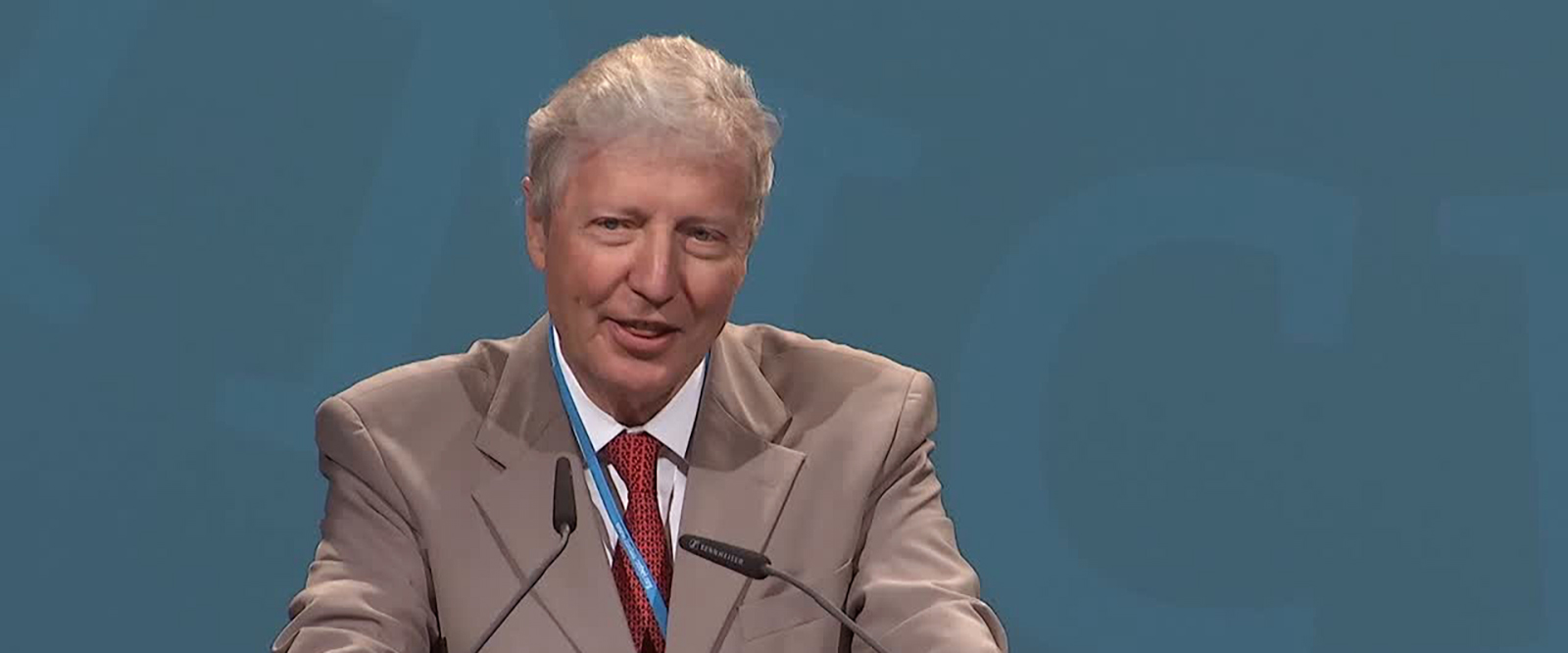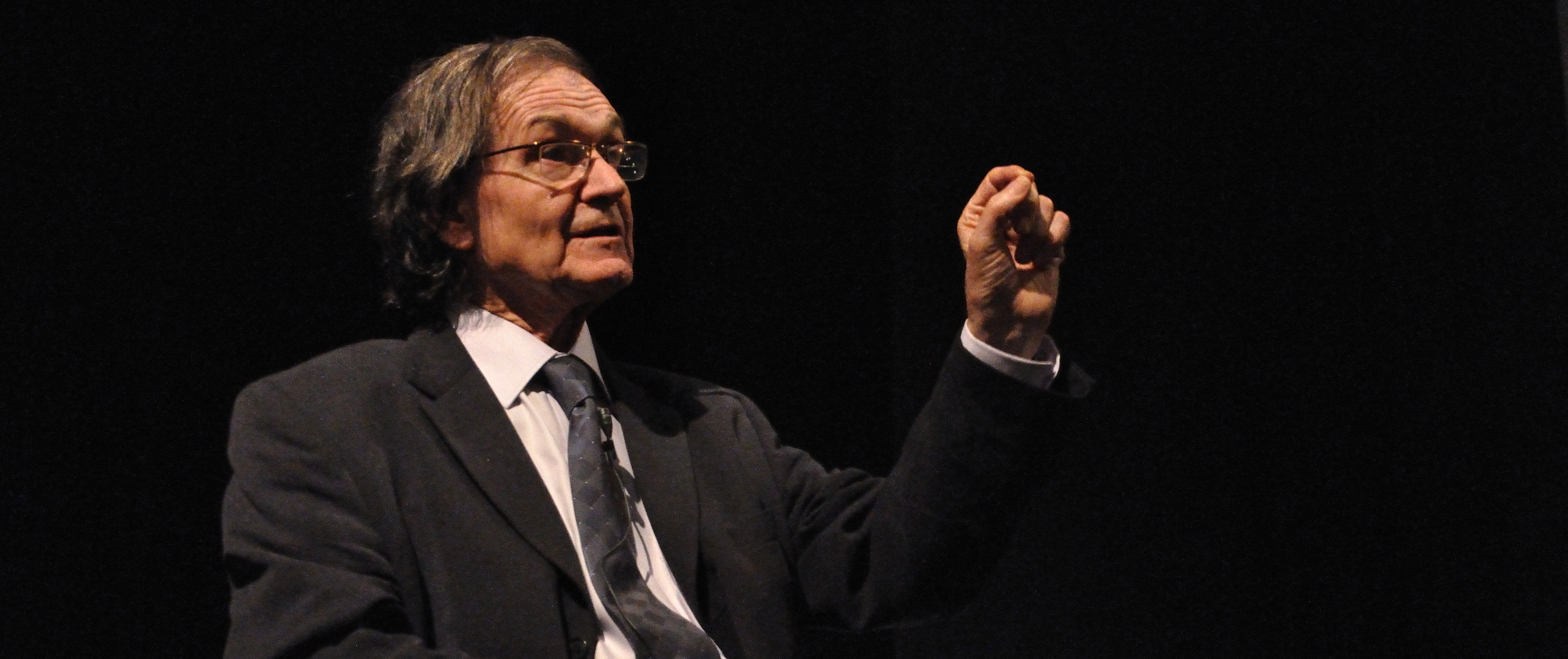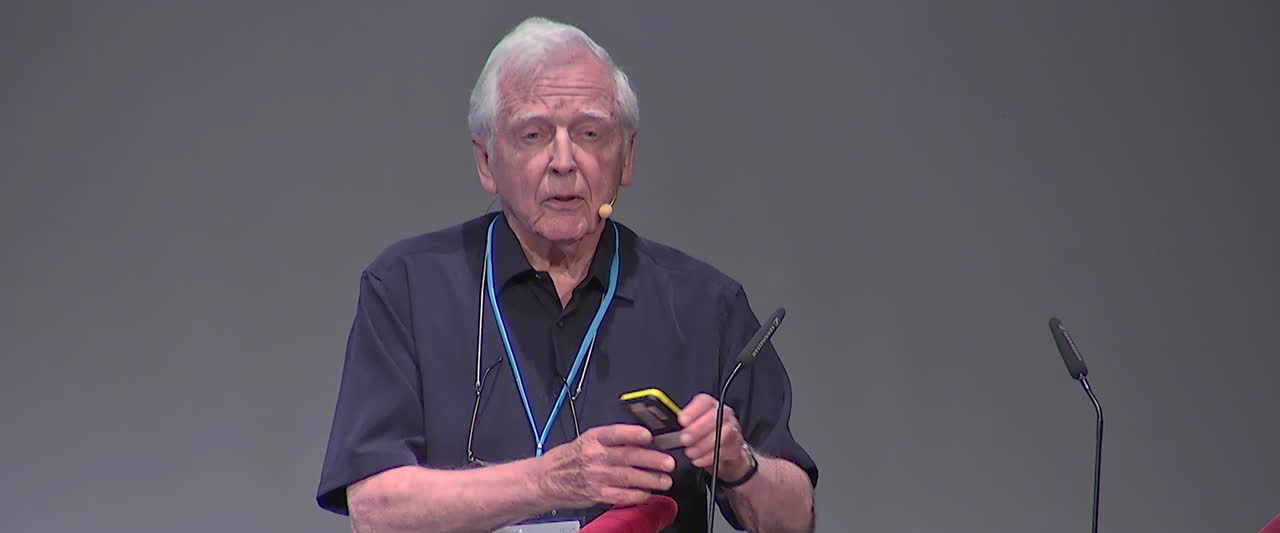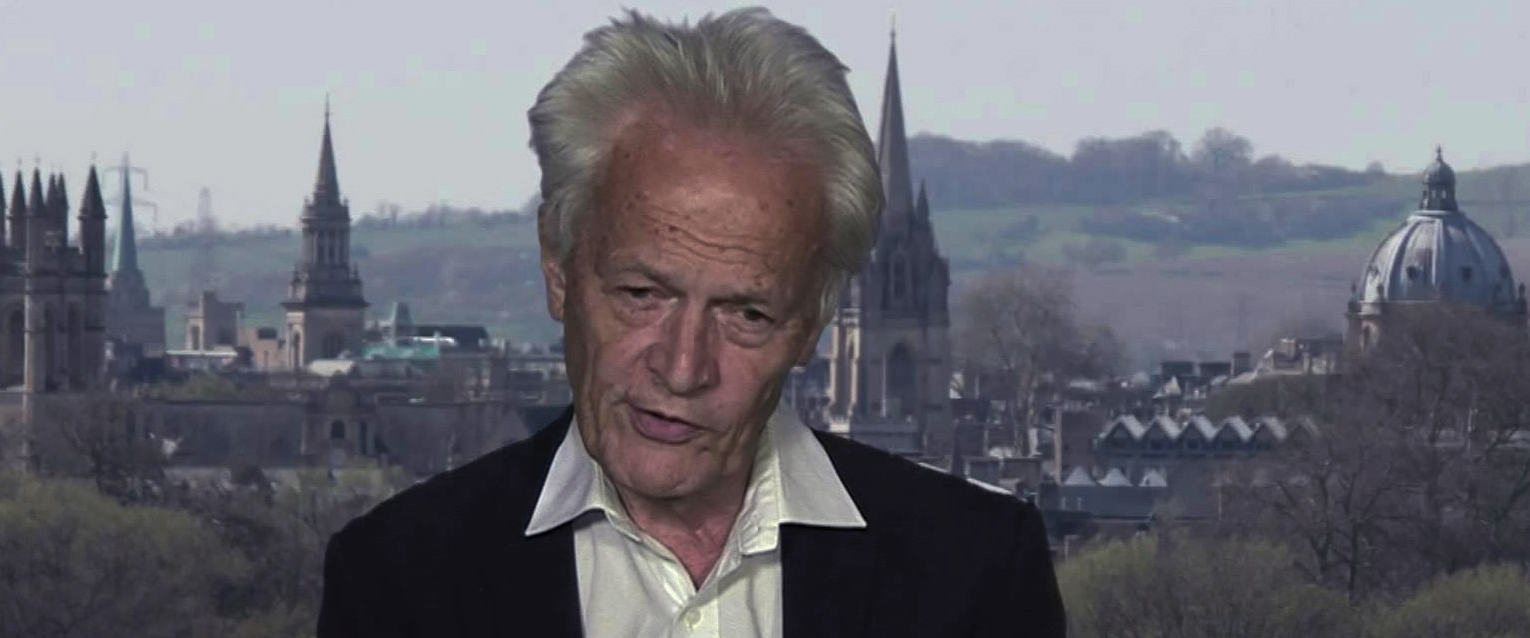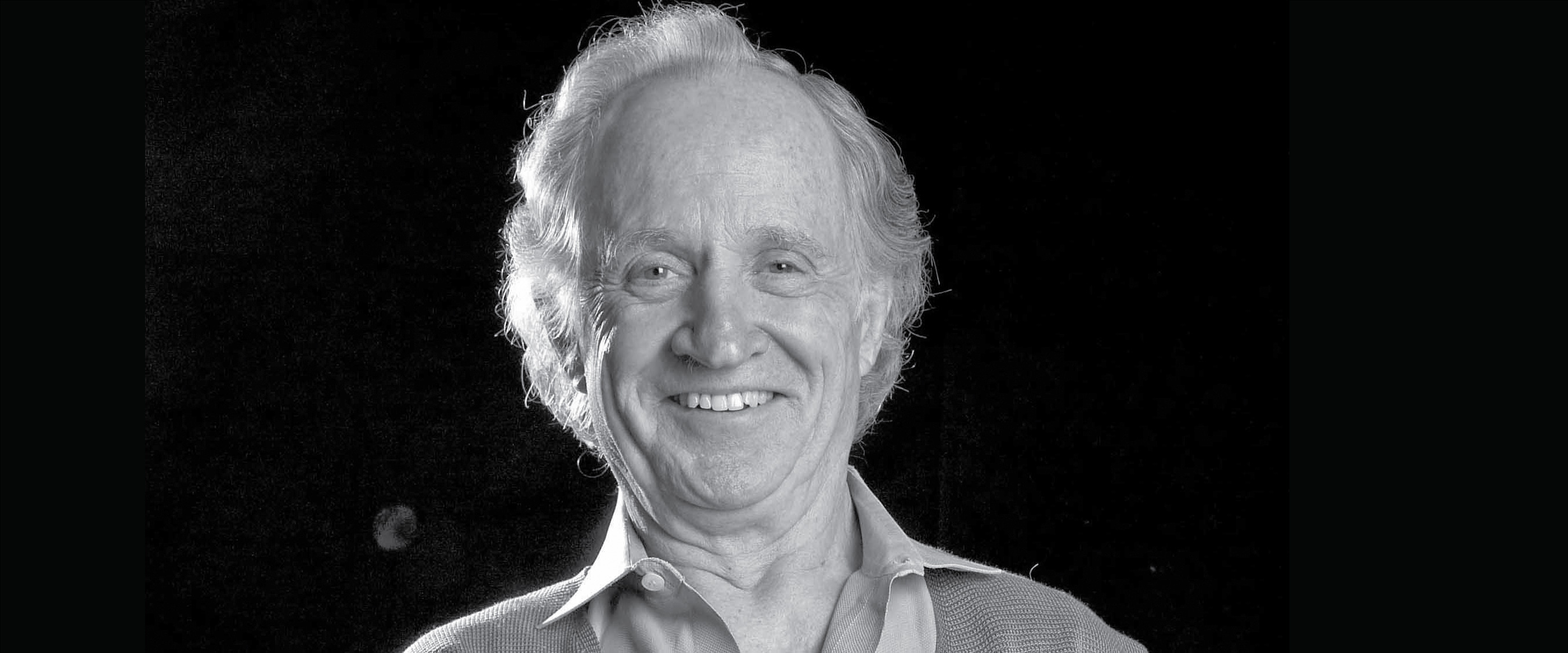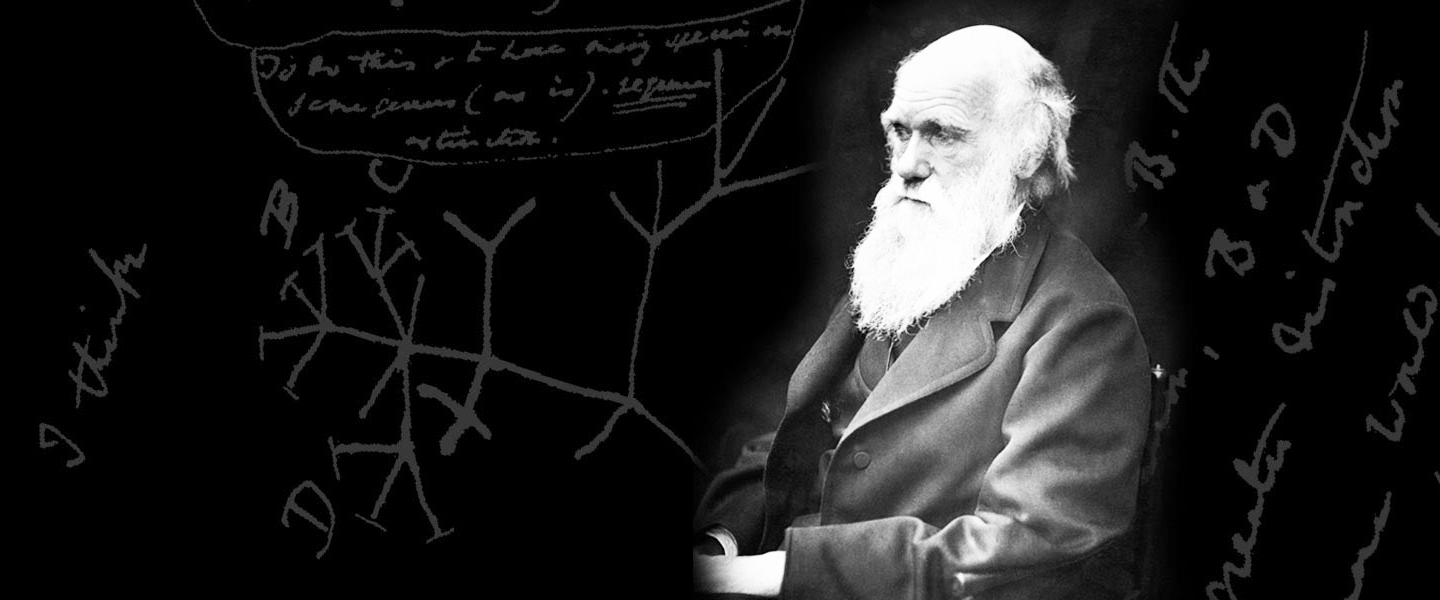8 April 2019.
Harald zur Hausen, German Cancer Institute, Heidelberg.
The 2018/19 M Fraccaro lecture will be given by Harald zur Hausen of the German Cancer Institute in Heidelberg in the main University lecture hall (Aula Magna) in Strada Nuova on the 8th of April at 5.00 pm and is entitled: Infectious Causes of Human Cancer. The lecture is organised on an annual basis jointly by Collegio A Volta and Collegio Cairoli where M Fraccaro served as a College Director for nearly 35 years. The poster of the lecture can be downloaded here. H zur Hausen made seminal contributions to the discovery of infectious agents causing human cancers through his pioneering work on Human Papilloma Viruses (HPV) and their roles as causal agents of cervical cancer and several other types of tumours. H zur Hausen's work led to the development of an HPV vaccine which is widely and successfully used in order to prevent HPV infection and thus cancer. For this work H zur Hausen was awarded the Nobel Prize for Physiology or Medicine in 2008.
Abstract
The growth, division, and death of living cells are regulated by their genes. If these functions are out of balance, tumors can form. One reason for this may be the incorporation of virus genes into the genes of host cells. Harald zur Hausen demonstrated in 1983 that cervical cancer in humans is caused by certain types of papilloma viruses (wart viruses), the genes from which are incorporated into the host cells' DNA. This discovery made it possible to develop a vaccine against cervical cancer, which had been the second most common tumor disease in women.
Biography
From Les Prix Nobel. The Nobel Prizes 2008, Editor Karl Grandin, [Nobel Foundation], Stockholm, 2009 (https://www.nobelprize.org/prizes/medicine/2008/hausen/biographical/)
Born in 1936, I experienced the Second World War as a child in the city of Gelsenkirchen-Buer. This area was heavily bombed, but fortunately all members of my family survived the war and post-war period. As a child I remember my own intensive interest in biology, birds, other animals and flowers and was determined at an early age to become a scientist. Since schools were closed due to the bombing raids in 1943, my elementary school training was full of gaps. When I entered “Gymnasium” at the age of 10 in 1946, during the first year these gaps were evident and created some difficulties for me. After the first year there, however, although not being the top pupil, I went to school without any major problems. In 1950 my parents moved to Northern Germany where I finished high school in 1955 with the “Abitur”.
After briefly considering whether to study biology or medicine, I opted for medicine and initiated my studies at the University of Bonn. The first two years were particularly hard, since I simultaneously decided to attend lectures and courses in biology as well. The first examination after 5 semesters (“Physikum”) was passed without any problems with remarkably good grades. This created some self-confidence for the forthcoming semesters, which I spent at the University of Hamburg for one year and the (at that time) Medical Academy in Düsseldorf. At the end of 1960 I graduated there in medicine and also finished my MD thesis.
Although I remained firmly determined to continue in science, I wanted to receive a licence to practice medicine. This required at that time two years of medical internship. It brought me for short periods of time into surgery, internal medicine and for the remaining time into gynaecology and obstetrics. The last part fascinated me tremendously, although it turned out to be physically highly demanding. When I left the hospital and started to work in Medical Microbiology and Immunology at the University of Düsseldorf, for the first and only time I had some doubts whether this was the correct decision. For a short while I considered returning to the life of a practising physician; after a couple of months, however, I became more fascinated by early experimental studies. Initially I started to work on virus-induced chromosomal modifications and at the same time received relatively solid training in diagnostic bacteriology and virology, both of them at that time in an early stage of development.
During my 3½ years in Düsseldorf, I became increasingly aware of the limitations in my scientific education and decided to search for a postdoctoral position elsewhere, preferably in the United States. I received an interesting offer from Werner and Gertrude Henle at the Children’s Hospital of Philadelphia, where Werner headed the Division of Virology. In 1964 I got married and our first son Jan Dirk arrived one year later. Within the same year we decided to accept the offer from Philadelphia; in the end of December 1965 I arrived there and started work at the beginning of 1966.
The Henle’s laboratory was deeply interested in the newly discovered Epstein-Barr virus (EBV), and the whole team was actively engaged in developing serological tests for this virus and in studying its epidemiology. They had noted early that Burkitt’s lymphoma patients developed high antibody titres against viral antigens. I felt very much compelled to work with this agent, but noted at the same time my lack of familiarity with the rapidly developing molecular biological methods. I urged Werner Henle to permit me to work with a different agent, namely adenovirus type 12, hoping that this relatively well established system would permit me to become acquainted with molecular methods. He reluctantly agreed. I started to work eagerly on the induction of specific chromosomal aberrations in adenovirus type 12-infected human cells, simultaneously studying a DNA-replication disturbance of individual chromosomes in human lymphoblastoid and lymphoma cell lines, and, to please my mentor, I demonstrated electron microscopically the presence of EBV particles directly in individual serologically antigen-positive Burkitt’s lymphoma cells. During my years in Philadelphia the immortalising function of EBV was demonstrated for human B-lymphocytes, and the role of this virus as a causative agent of infectious mononucleosis was conclusively established.
In 1968 I received an attractive offer from Eberhard Wecker, who headed the newly opened Institute for Virology at the University of Würzburg, Germany. He offered me the establishment of my own independent group and granted me his support for a quick start in the German academic system. I accepted this offer and moved with my family in March 1969 back to Germany. Here I decided to change my topics completely to EBV research. The intention was to prove that EBV DNA persists in every tumour cell of Burkitt’s lymphoma and does not establish a persistent infection there, as assumed at that time by a number of my former colleagues. With the aid of Werner Henle in Philadelphia and George Klein in Stockholm I received a large number of Burkitt’s lymphoma cell lines and tumour biopsies. The biopsies also included material from nasopharyngeal carcinomas, where serological assays also suggested an involvement of EBV infections.
The major problem, the purification of sufficient quantities of EBV DNA from a low number of spontaneously virus-producing cells, was quickly solved. By the end of 1969 I had the first data available that the non-EBVproducing Burkitt’s lymphoma cell line Raji contained multiple copies per cell of EBV DNA. Shortly thereafter it was also possible to demonstrate EBV DNA in Burkitt’s lymphoma and nasopharyngeal cancer biopsies. It seems that this was the first demonstration of persistent tumour virus DNA in human malignancies.
In nasopharyngeal carcinomas, composed of a mixture of epithelial tumour cells and lymphocytic infiltrates, it was intensively discussed whether the EBV DNA might rest in the lymphocytic infiltrates. By using in-situ hybridisations, in 1973 we were able to document the presence of EBV DNA in the epithelial tumour cells.
In 1972 I was appointed chairman of the newly established Institute of Clinical Virology in Erlangen-Nürnberg. With the move to this city I planned to change my scientific direction. Cervical cancer had long been suspected of being caused by an infectious agent. In the late 1960s Herpes simplex type 2 (HSV-2) emerged as the prime suspect based on some seroepidemiological observations. Since our previous EBV work led to the identification of EBV DNA in specific human cancers, I had asked my colleague Heinrich Schulte-Holthausen to use the same technique to search for HSV-2 sequences in cervical cancer biopsies. All attempts, however, failed.
During the previous years I had studied a large number of anecdotal reports describing malignant conversion of genital warts into squamous cell carcinomas. Since genital warts had been shown to contain typical papilloma-virus particles, this triggered the suspicion that the genital wart virus might represent the causative agent for cervical cancer. Based on this hypothesis we initiated our papillomavirus programme in Erlangen. With the aid of the local Dermatology Hospital we received a large number of wart biopsies. Viral particles could be extracted from plantar warts and in 1974 we published our first report, demonstrating a cross-hybridisation of the plantar wart virus DNA with some warts, but by far not with all of them. Genital warts and cervical cancer biopsies were negative. This was our first hint that there exist different types of papillomaviruses. In the following years our group, as well as the group around Gérard Orth in Paris, were able to identify the plurality of the human papillomavirus family by isolating a steadily increasing number of novel types.
In 1977 I was appointed as chairman of the Institute of Virology of the University of Freiburg, Germany. Most members of my group in Erlangen joined me in moving to Freiburg. Here we continued intensively our studies on human papillomaviruses.Late in 1979 my co-workers Lutz Gissmann and Ethel-Michele de Villiers successfully isolated and cloned the first DNA from genital warts, HPV-6. It was initially disappointing not to detect this DNA in cervical cancer biopsies. HPV-6 DNA, however, turned out to be helpful in isolating another closely related genital wart papillomavirus, HPV-11, initially from a laryngeal papilloma. By using HPV-11 as a probe, one out of 24 cervical cancer biopsies turned out to be positive. In addition, in other biopsies some faint bands became visible, permitting the speculation that they might represent hints of the presence of related, but different HPV types in these cancers. Two of my former students; Mathias Dürst and Michael Boshart, were asked to clone these bands. Both of them were successful. In 1983 we were able to document the isolation of HPV-16, in 1984 the isolation of HPV-18 DNA. We noted from the beginning that HPV-16 DNA was present in about 50% of cervical cancer biopsies, HPV-18 in our early experiments in slightly more than 20%, including several cervical cancer cell lines, among them the HeLa line.
Within the first two years after isolating HPVs 16 and 18 it became clear that these viruses must play an important role in cervical cancer development: viral DNA was commonly found in an integrated state, indicating the clonality of the tumour. In addition, part of the viral genome frequently became deleted in the process of integration. Two viral genes, E6 and E7, were consistently transcribed in the cancer cells. Precursor lesions of cervical cancer also contained these viruses and expressed the respective genes. Early contacts with pharmaceutical companies for the development of HPV vaccines failed, in view of a market analysis conducted by one of them which indicated that there would be no market available. Fortunately, this changed in later years.
My period in Freiburg permitted me to also work on other aspects of tumour virology: I discovered the potent activity of some phorbol esters in inducing latent Epstein-Barr virus DNA. This procedure also proved to be successful for other persistent Herpes-type viruses. In addition, I isolated a novel lymphotropic polyomavirus from African Green Monkey lymphoblasts. Up to 20% of sera from human adults also revealed neutralising antibodies to this virus. Our attempts to isolate a human correlate, however, failed. I also identified a novel adeno-associated virus, now labelled AAV-5, from my own skin scrapings. In collaboration with my colleague Jörg Schlehofer, we were also able to demonstrate that herpes simplex virus, but also other herpes-, adeno-, and vaccinia virus infections of polyoma- or papillomavirus DNA harbouring cells, resulted in amplification of the DNA of the latter. The early hypothesis that cervical cancer was caused by papillomaviruses, the successful isolation and characterisation of the two most frequent HPV types in this cancer and the subsequent steps leading to a better understanding of the mechanism of HPV-mediated carcinogenesis and eventually to the development of a preventive vaccine were cited as the prime reasons for awarding one half of the Nobel Prize for Medicine or Physiology to me in 2008.
In 1983 I was appointed as the Scientific Director of the German Cancer Research Centre (Deutsches Krebsforschungszentrum) in Heidelberg, a national research centre. Besides the major task of reorganising this research centre, I tried to maintain some time for laboratory research and continued jointly with Frank Rösl to analyse intracellular and extracellular control mechanisms preventing the activity of viral oncogenes in proliferating epithelial cells. In 2003, after 20 years, I retired from the scientific directorship of the German Cancer Research Centre. Subsequently, I kept a laboratory in the virus building of the Cancer Centre and continue up to now to act as Editor-in-Chief of the International Journal of Cancer. I started this commitment at the beginning of 2000. In retrospect, I have devoted my scientific life mainly to the question to what extent infectious agents contribute to human cancer, trusting that this will contribute to novel modes of cancer prevention, diagnosis and hopefully later on also to cancer therapy. I am of course pleased to see that at least part of this programme has been successful. I am grateful to a large number of my former co-workers, who skilfully contributed to the programme. In addition, I most gratefully acknowledge the contributions of my wife, Ethel-Michele de Villiers, who is also a scientist and tumour virologist, for her never-ending support.
Image
Cells from the uterine cervix of a patient with severe dysplasia. Image courtesy of the University of Copenhagen.
